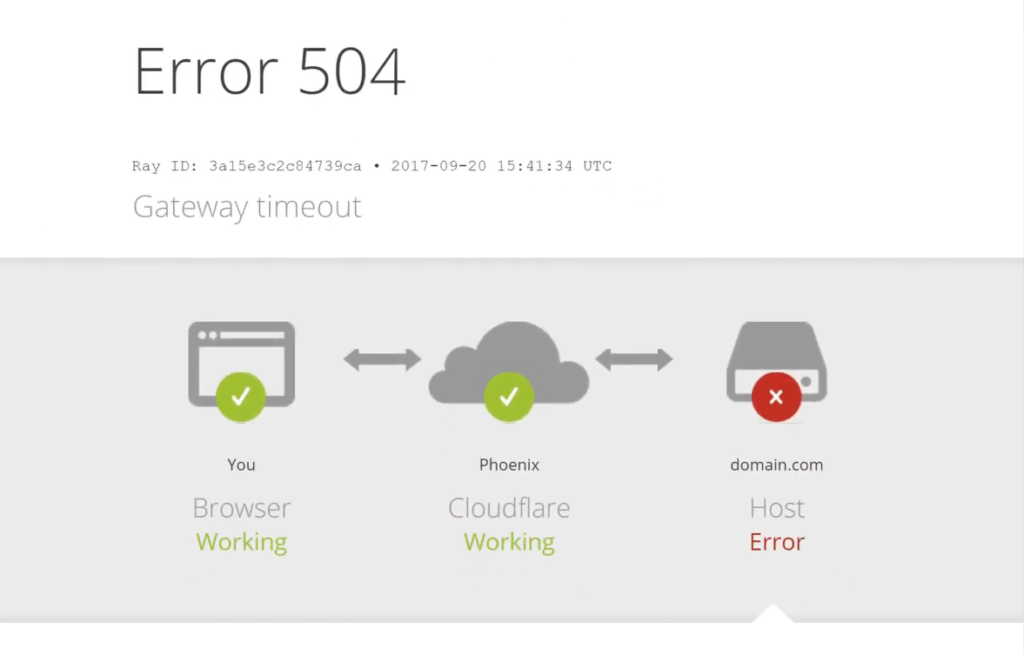In the realm of web development, encountering HTTP errors is part of the landscape. HTTP Error 504, specifically the Gateway Timeout error, is a common hurdle that developers may face. Exploring HTTP Error 504 – Gateway Timeout and its impact, let’s now address another crucial HTTP error code, Error 412.
This article provides an in-depth exploration of Error 504, unraveling its origins, implications, and practical solutions for effective resolution.
What is Error 504
A server, which may not always be a web server, functions as a gateway or proxy, attempting to complete a client’s request (such as a browser or CheckUpDown robot) to retrieve the specified URL. This gateway or proxy server was unable to get a prompt reply from another server upstream that it contacted in order to process the HTTP request.
Typically, this indicates that the upstream server is not responding at all (it’s down), which is a different issue than the upstream server and the gateway/proxy having a disagreement over the data exchange protocol.
Fixing 504 errors – general
504 errors usually stem from slow communication between the various systems behind the scenes, often including the web server. Fixing these problems is generally the job of the network administrators who manage the server’s hosting environment. These professionals have the required access and skills to identify and fix the issues causing these network slowdowns.
Fixing 504 errors – CheckUpDown
- The prevalence of proxies and caching is growing on the web;
- The CheckUpDown robot aims to connect directly to the actual server hosting the website, yet control over the final destination of an HTTP request is not absolute;
- If any computer within the network chain handling the HTTP request malfunctions, it can lead to errors like 504.
In the event of a 504 error, reaching out to the service provider is advisable, with email as the preferred mode of communication. Such errors are outside of one’s personal ability to resolve. Coordination with the Internet Service Provider (ISP) and the web server software vendor is essential to investigate the sequence of IP data exchanges across their network. Nonetheless, resolving this issue can be complex due to the fluctuating nature of internet traffic, which often causes this type of error to be short-lived and unpredictable.

504 errors in the HTTP cycle
A client, like a web browser or a diagnostic tool, follows a sequence when interacting with a web server:
- It first retrieves the IP address corresponding to the site’s domain name (the URL minus ‘http://’), a process carried out by domain name servers (DNS);
- It then establishes a connection over an IP socket to the IP address;
- Next, it sends an HTTP data stream through this socket;
- It receives a returning HTTP data stream from the web server, which includes status codes as per the HTTP protocol. The client examines this data stream to understand the status codes and to gather other relevant data.
A ‘504’ status code error happens during the last step, indicating the client recognizes it as an error of gateway timeout.
Conclusion
HTTP Error 504 – Gateway Timeout is a transient but impactful challenge in web development. Understanding its causes and implementing proactive measures to optimize server performance and network connectivity can significantly contribute to minimizing the occurrence of this error. By addressing the underlying issues and fine-tuning server configurations, developers can enhance the reliability and responsiveness of web applications, providing users with a smoother and more seamless online experience.


